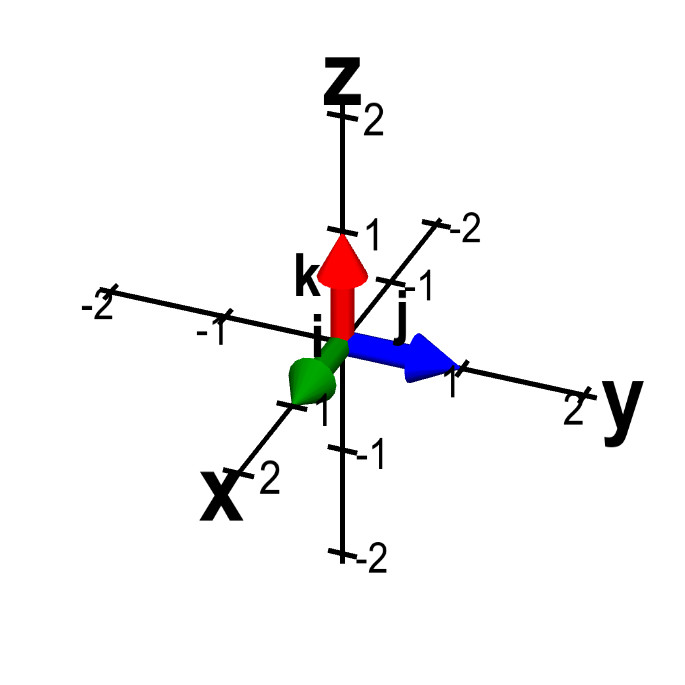
12 4 prove the property of cross products theorem 11. A vector of unit magnitude in the radially outward direction is designated by ˆr.

The Standard Unit Vectors Math Insight
The vector product between two vectors results in a vector that is.

Unit vectors i j k. If the vectors are given in unit vector form you simply add. As i and i are unit vectors therefore there magnitudes will be unity. When a unit vector in space is expressed in cartesian notation as a linear combination of i j k its three scalar components can be referred to as direction cosines.
Then why i x j k. So by the above relationships the unit basis vectors i j and k of an orthonormal right handed cartesian coordinate frame must all be pseudovectors if a basis of mixed vector types is disallowed as it normally is since i j k j k i and k i j. Eq i j k 8i k eq application of vector product.
12 4 show that 0 a 0 a 0 for any vector a in v3. Find two unit vectors orthogonal to both given vectors. 12 4 find two unit vectors orthogonal to both 3 2 1.
I x i o. K x k 0. Find a unit vector orthogonal to both given vectors.
2 18 ˆr r r. The unit vector in the direction of the x axis is i the unit vector in the direction of the y axis is j and the unit vector in the direction of the z axis is k. As sin 0 is 0 therefore above equation will become.
Writing vectors in this form can make working with vectors easier. Therefore two unit vectors must be in the same direction that is x direction so the angle between them will be 0 degree. J x j 0.
In addition to i j and k two other unit vectors are used in this text. I j k 9i k 2 find two unit vectors orthogonal to both 3 2 1 and 1 1 0. 12 4 show that a b b 0 for all vectors a and b in.
For example the vector 5 i 3 j would look something like this on a diagram. If two vectors are added together the resultant is found by placing the vectors to be added end to end. Smaller i value х larger i value x 3 find the volume of the parallelepiped with adjacent edges pq pr and ps.
The value of each component is equal to the cosine of the angle formed by the unit vector with the respective basis vector. The unit vector ˆr is formed by taking the position vector r and dividing it by its magnitude. 12 4 find two unit vectors orthogonal to both j k and.



